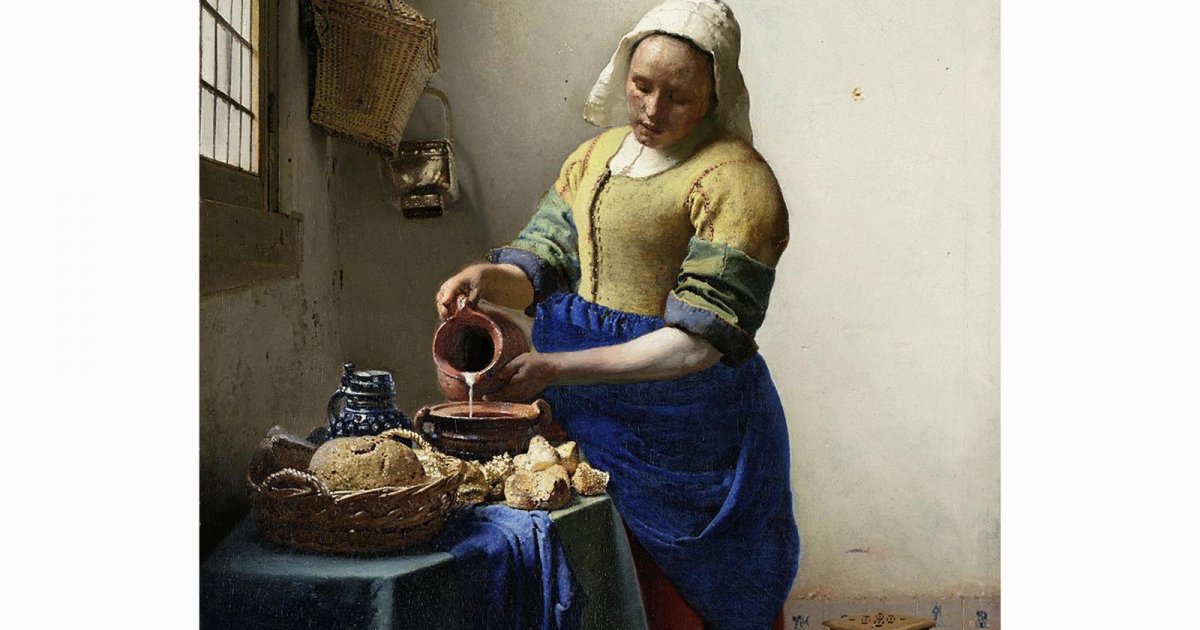RIJKSMUSEUM , The Milkmaid Vermeer
 Language: English / USA
Language: English / USA
In one of the rooms that looks onto the main gallery, you can admire three magnificent paintings by the world-famous Dutch painter Johannes Vermeer, known for the almost photographic realism of his works.
The great artist, who was born in Delft in 1632 and died at the age of just 43 in 1675, left us with just forty or so small works in which, however, he was able to bring a touch of profoundly intimate humanity to everyday activities that no painter has ever been able to equal.
Vermeer’s close familiarity with the female universe allowed him to frequently portray women in the privacy of their homes, and The Milkmaid, painted around 1658, is one of his best-known works.
The other Vermeer paintings you can see in the Rijksmuseum are Girl Reading a Letter, the small landscape painting entitled The Little Street, and the indoor scene entitled The Love Letter, which I’ll be telling you about later.
In The Milkmaid, Vermeer moves away from his more usual bourgeois settings, showing us a humble kitchen, where the floor is anything but shiny, and where we can see kitchen utensils hanging on walls with stains and crumbling plaster.
The pure white milk being poured from the jug forms the brightest part of the scene, depicted from a slightly raised perspective, and pale light spreads throughout the room. Perfectly balanced in all its elements, the painting offers an extraordinary, almost three-dimensional, representation of many objects: from the woven bread basket to the plain wooden mousetrap, as well as the wicker basket, the polished metals, the ceramics and the clothing, where we can see the combination of yellow and blue Vermeer was so fond of. The exceptionally realistic way in which the materials are depicted does not, however, distract the attention from the robust female figure and the almost reverential way she is carefully pouring the milk without spilling a drop.
The Milkmaid has also been considered an allegorical personification of the seventeenth-century Netherlands, and not only in terms of its ethical values: the country was – and still is – also famous for cattle rearing, the production of butter and milk and its rich, varied diet.
An interesting fact: take a look at the decorative element in the painting formed by the skirting made of blue and white majolica tiles. This feature is no coincidence, because these tiles are a typical product of Vermeer’s native town of Delft.



